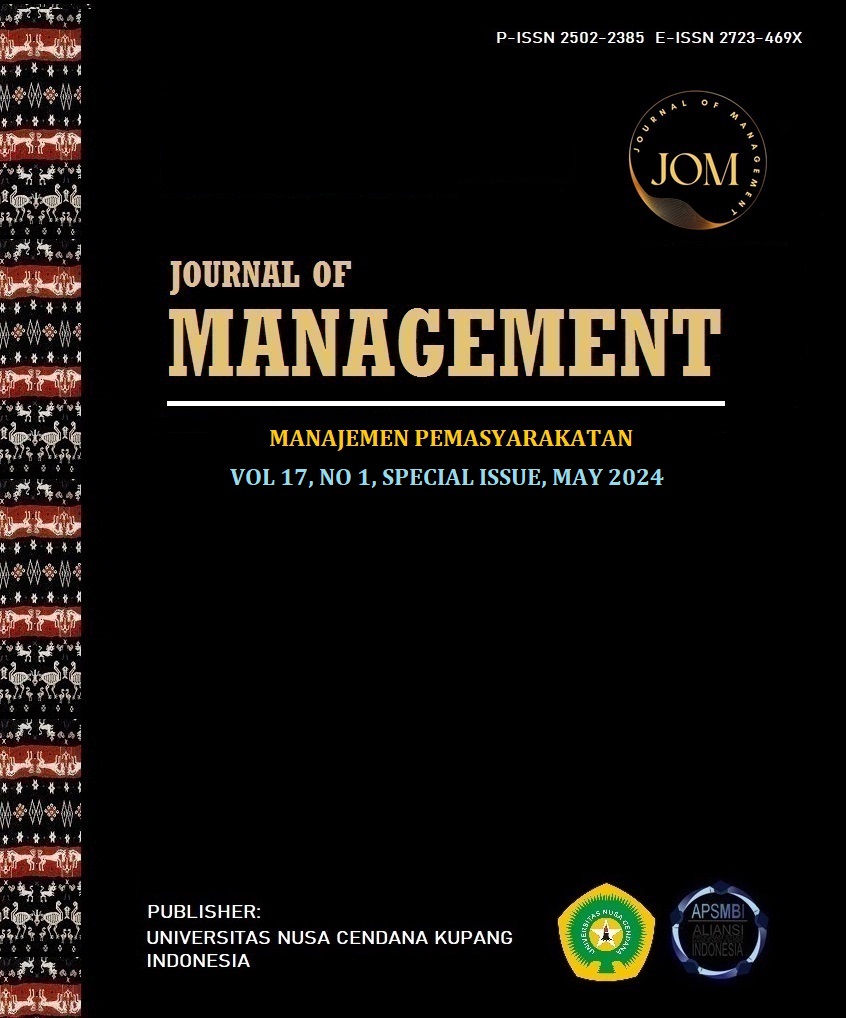CRIMINAL THINKING DITINJAU DARI KELEKATAN KELUARGA BAGI NARAPIDANA KASUS NARKOTIKA UNTUK PEMBINAAN LANJUTAN DI LEMBAGA PEMASYARAKATAN KELAS I SEMARANG
Abstract
The concept of criminal thinking sees that someone who has a mindset and is involved in criminal lifestyle habits can give rise to antisocial behavior. The criminal mindset originates from a personality that has a unique or distinctive behavioral pattern, such as rationalization thinking, which always gives rise to justification for behavior that is intended to distort the facts. This research was conducted at the Semarang Class I Prison, and the research subjects were correctional inmates with narcotics crime cases, with a sample size of 100 people. The results showed that the attachment variable had a significant effect on the criminal thinking variable in prisoners at the Semarang Class I Penitentiary, and there is a strong relationship between attachment and criminal thinking in prisoners, and the direction of the relationship between the attachment variable and criminal thinking is in the opposite direction (negative correlation), which means that the higher the level of attachment, the lower the level of prisoners' criminal thinking, and conversely, the lower the level of attachment functioning, the higher the criminal thinking.
Keywords: Attatchment; Criminal Thinking; Prisoner
Downloads
References
Creswell, J. W. (2013). Qualitative Inquiry and Research Design (Third Edit). SAGE Publications, Inc.
Creswell, J. W. (2019). Research Design: Pendekatan Kualitatif, Kuantitatif, dan Mixed (4th ed.). Pustaka Pelajar.
Fatkhurohmah, D., Karim, M. B., Nisa, T. F., (2019) Kelekatan Anak Keluarga Tenaga Kerja Wanita, Volume 5 Nomor 2, Desember 2019
Hasanah, U. (n.d.). Pengaruh Kelekatan Keluarga Terhadap Adversity Quotient Pada Mahasiswa Bidik Misi.
Link, T., C., & Oser, C., B., (2018), The Role of Stressful Life Events and Cultural Factors on Criminal Thinking among African American Women Involved in the Criminal Justice System
Nafarizka, M., A., Santoso, I., (2021) Faktor Yang Dapat Mempengaruhi Depresi Pada Narapidana Di Lapas, Vol 8 No 5 Tahun 2021 Hal. : 1220-1232
Novitasari, Y., Subarkah, M., Z., (2022), Pengaruh Kontrol Diri Terhadap Criminal Thinking Tahanan dan Narapidana Di Rutan Kelas I Surakarta
Puspita, H., (2019), Kelekatan Anak dengan Pengasuh Tempat Penitipan Anak, Jurnal PG-PAUD Trunojoyo : Jurnal Pendidikan dan Pembelajaran Anak Usia Dini
Prabowo, A. (2013). Kriminologi dan Hukum Pidana. Jakarta: Laks Bang
Grafika.
nSantoso, T. & Zulfa, E. A. (2013). Kriminologi. Jakarta: PT Raja Grafindo Persada.
Subarkah, M., Z., iWidyatama, Y., (2022), The Effect of Religious Activities on Criminal Thinking in Prisoners of the State Prison Class I Surakarta, Jurnal Lentera Vol. 21 No. 1
Yusuf, M. (2016). Metode Penelitian Kuantitatif, Kualitatif & Penelitian
Gabungan. Jakarta: Kencana.

 Reza Kharisma Hadi(1*)
Reza Kharisma Hadi(1*)



